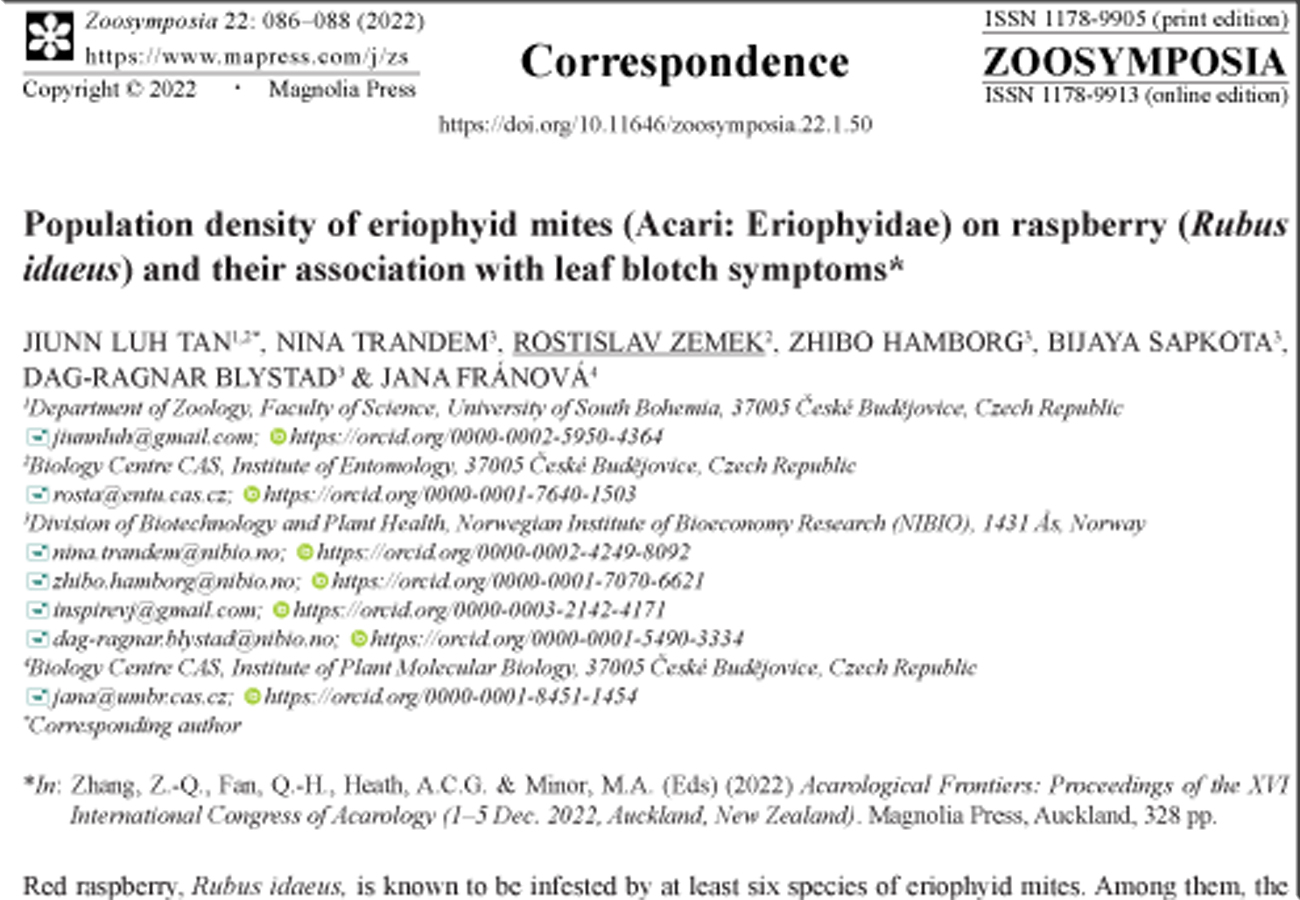Abstract
Red raspberry, Rubus idaeus, is known to be infested by at least six species of eriophyid mites. Among them, the raspberry leaf and bud mite, Phyllocoptes gracilis, (Figure 1, A–B) is the only known vector of a raspberry virus, namely the raspberry leaf blotch virus (RLBV) (Dong et al. 2016; McGavin et al. 2012; Tan et al. 2022). Raspberry leaf blotch (Figure 1, C), a leaf disorder displaying as leaf chlorosis, distortion and patchy necrosis, yellowing and thinning on lateral branches, has been attributed to the feeding of P. gracilis until RLBV was also found to be associated with these symptoms (McGavin et al. 2012). Previous sampling of eriophyid mites was often based on the presence of the leaf blotch symptom, and there is a reasonable doubt if the symptom was caused by RLBV infection or mite infestation. It could also be hypothesized that eriophyid mites are attracted to RLBV-infected plants as viruses could make host plants more attractive to vectors (Donnelly & Gilligan 2020; Shi et al. 2019). It is therefore important to improve the detection of both mites and RLBV to efficiently manage the virus. In addition, knowledge on the dominant infestation area of eriophyid mites on raspberry canes is essential to develop an effective pest management approach. Gordon and Taylor (1976) reported that P. gracilis on primocanes during late summer (mid-August) was dominantly found on the upper leaves, due to the presence of predatory mites on the lower and middle leaves. But mite behavior on floricanes is also important to study if the goal is to prevent mite migration and RLBV transmission to primocanes. This study aimed to investigate the population density of eriophyid mites on raspberry floricanes and the association of eriophyid mites, RLBV, and leaf blotch symptoms.
References
Dong, L., Lemmetty, A., Latvala, S., Samuilova, O. & Valkonen, J.P.T. (2016) Occurrence and genetic diversity of Raspberry leaf blotch virus (RLBV) infecting cultivated and wild Rubus species in Finland. Annals of Applied Biology, 168(1), 122–132. https://doi.org/10.1111/aab.12247
Donnelly, R. & Gilligan, C.A. (2020) What is pathogen-mediated insect superabundance? Journal of the Royal Society Interface, 17(170). https://doi.org/10.1098/rsif.2020.0229
Gordon, S.C. & Taylor, C.E. (1976) Some aspects of the biology of the raspberry leaf and bud mite (Phyllocoptes (Eriophyes) gracilis Nal.) Eriophyidae in Scotland. Journal of Horticultural Science, 51, 501–508. https://doi.org/10.1080/00221589.1976.11514719
McGavin, W.J., Mitchell, C., Cock, P.J.A., Wright, K.M. & MacFarlane, S.A. (2012) Raspberry leaf blotch virus, a putative new member of the genus Emaravirus, encodes a novel genomic RNA. Journal of General Virology, 93, 430–437. https://doi.org/10.1099/vir.0.037937-0
Shi, X., Preisser, E.L., Liu, B., Pan, H., Xiang, M., Xie, W., Wang, S., Wu, Q., Li, C., Liu, Y., Zhou, X. & Zhang, Y. (2019) Variation in both host defense and prior herbivory can alter plant-vector-virus interactions. BMC Plant Biology, 19. https://doi.org/10.1186/s12870-019-2178-z
Tan, J.L., Trandem, N., Fránová, J., Hamborg, Z., Blystad, D.-R. & Zemek, R. (2022) Known and potential invertebrate vectors of raspberry viruses. Viruses, 14 (3), 571. https://doi.org/10.3390/v14030571


